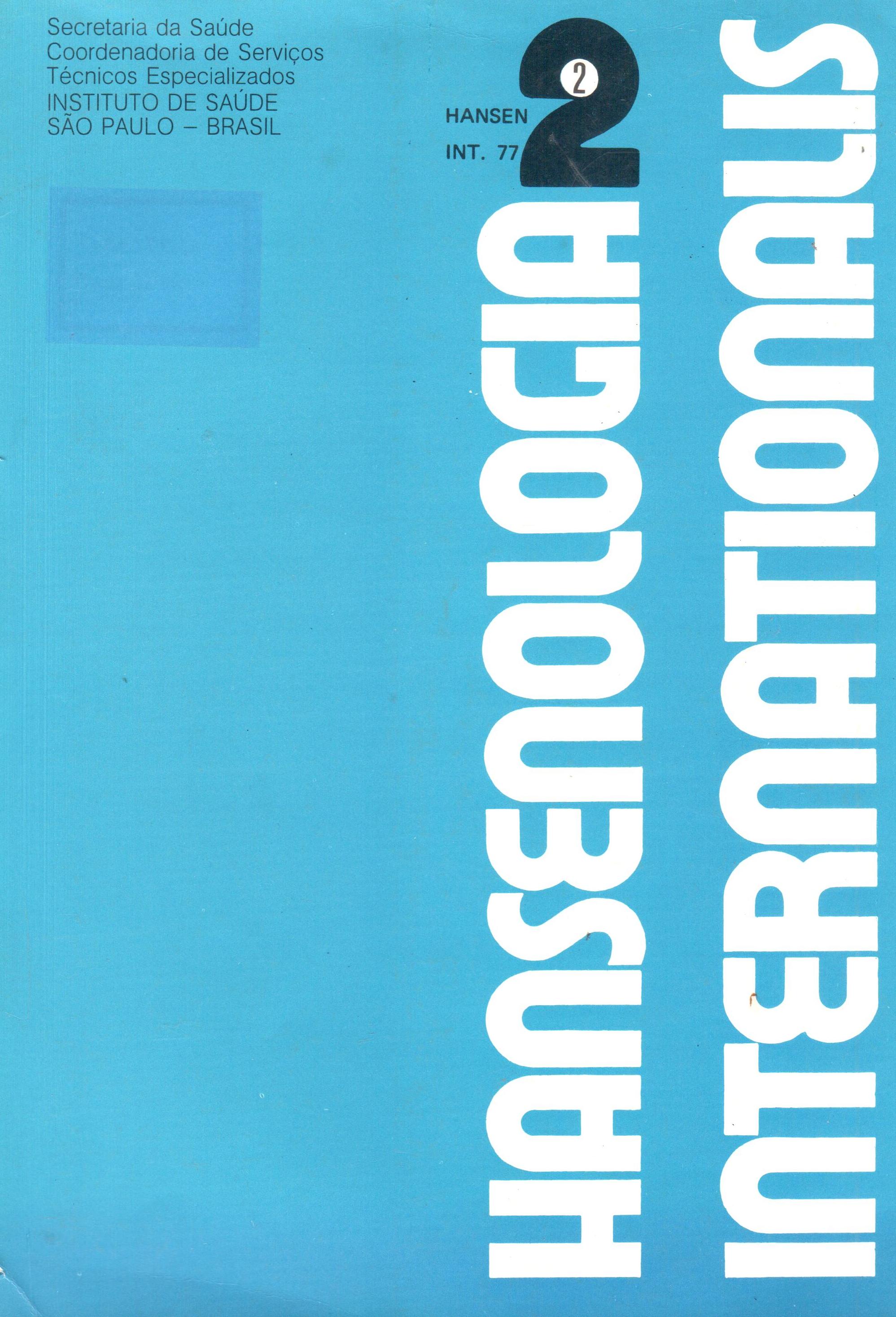Resumen
The foundations of the pathogenetical theory "N-factor/Anergic Margin" postulated in 1937 and completed in 1957 are given. Based on the observation of 2.160 persons who had been tested by the author with Mitsuda's and frequently with other allergens, it was hypothesized that all individuals are born Mitsuda-negative but gradually become Mitsuda-positive with age, after stimulation by Hansen's mycobacterium, Myco tuberculosis BCG or other unknown agents, if they are capable of reacting, depending on the presence of a constitutional "natural" factor of resistance ("N-factor"). If infection occurs, the "N-factor" bearers resist, but tuberculoid lesions may appear if "accessory factors" coadjuvate. The minority, lacking the "N-factor", remains Mitsuda-negative throughout life ("Anergic Margin") and, if infected, may progress to the Virchowian aspects after the same coadjuvation. An extensive range of intermediate reactivities should be placed between both extremes of maximal hyperergy and maximal energy. The erythematous and/or hypochromic macule would be the theoretical initial stage of the tuberculoid, Virchowian and intermediate lesions. The theory contradicted Mitsuda's hypothesis of "exhaustion" of the Mitsuda-positivity to explain the energy of "nodular" (Virchowian) patients. It gave support to a genetical basis for predisposition to hanseniasis and was pessimistic about the preventive possibilities of BCG. The general acceptance of the theory — under its original or modified terminology (v.g. "Potential immunity', "Defect of cell-mediated immunity", etc.), the pending questions, and the field it represents for future research will be the subjects of following articles of this series.
Citas
2. AZULAY, R. D. & CONVIT, J. The Mitsuda test in non-leprous persons in a non-endemic country. Int. J. Lepr., 15:264-266, 1947.
3. BARGEHR, P. Spezifische Hautreaktionen bei Lepra. Z. Immunitaetsforsch. Exp. Ther., 47:529-531, 1926.
4. BERNUCCI La reattivitá della cute ad antigeni tuberculinici e ad antigeni aspecifici studiata in varie condizioni patologiche. Giorn. Ital. Mal. Ven., 65:1183-1204, 1924.
5. BONCINELLI, U. Ricerche ed osservazioni sulla reattivitá cutanea dei lebbrosi alie cosidette "lepromine". Giorn. Ital. Dermatol. Sifil., 78 A`29-652, 1937.
6. CUMMINS, L. D. St WILLIAMS, E. M. Cutaneous sensitivity to acidfast bacilli in suspension. Br. Med. J., 1:702-703, 1934.
7. DE LANGEN, C. D. Specific skin-reactions in case of leprosy. Meded. Dienst. Wolksg. Ned. Ind., 18:113-119, 1929.
8. DUBOIS, A. La reaction de Mitsuda (Note complementaire) Bull. Soc. Pathol. Exot., 29:649-651, 1936.
9. FERNANDEZ, J. M. M. (II) Estudio comparativo de la reaccion de Mitsuda con las reacciones tuberculinicas. Rev. Argent. Dermatosif., 23:425-452, 1939.
10. HAYASHI, F. Mitsuda's skin reaction in leprosy. Int. J. Lepr. 1:31-38, 1933.
11. MITSUDA, K. Les lépreux maculo-nerveux, d'une part, les tubereux d'autre part se comportent differément LI la suite d'une inoculation d'émulsion de tubercle lépreux. In: CONFERENCE INTERNATIONALE DE LA LÈPRE, 3., Strasbourg, 1923. Communications et Debats. Paris, Baillière, 1924. p. 219-220.
12. ROTBERG, A. Contribuição para o estudo das cuti-reações alérgicas na lepra. Reação de Mitsuda-Hayashi. (Contribution to the study of the allergic skin tests in leprosy. Mitsuda - Hayashi's test). S. Paulo, Rev. Tribunais, 1934. [Tese - Faculdade de
Medicina São Paulo] 50 p.
13. ROTBERG, A. Some aspects of immunity in leprosy and their importance in epidemiology, pathogenesis and classification of forms of the disease. Based on 1529 lepromin-tested cases. Rev. Bras. Leprol., 5 (n.° esp.) :45-97, 1937.
14. ROTBERG, A. Modern trends in the study of the epidemiology of leprosy. In: PACIFIC SCIENCE CONGRESS, 6th, Berkeley, California, 1939. Proceedings. V. 5,p .939-945.
15. ROTBERG, A. The influence of allergic factors in the pathogenesis of leprosy. In: PACIFIC SCIENCE CONGRESS, 6th, Berkeley, California, 1939. Proceedings. v.5, p. 977-982.
16. ROTBERG, A. Estudos sobre as reações tuberculínicas na lepra. Rev. Bras. Leprol., 6(3):245-272, 1938.
17. ROTBERG, A. Fator "N" de resistência it lepra e relações com a reatividade lepromínica e tuberculínica. Valor duvidoso do BCG na imunização antileprosa. ("NFactor" of resistance to leprosy and its relationships with reactivity to lepromin and tuberculin. Doubtful value of BCG in anti-leprous immunization.) Rev. Bras. Leprol., 25:85-106, 1957.
18. ROTBERG, A.; BECHELLI, L. M.; KEIL, H. Reação de Mitsuda em área não leprogênica. (The Mitsuda reaction in a non-leprous area) In: CONGRESO INTERNACIONAL
DE LA LEPRA, 5.°, Havana, 1948. Memórias. Habana, Editorial Cenit, 1949. p. 586-594.
19. ROTBERG, A.; BECHELLI, L. M.; KEIL, H. The Mitsuda reaction in a non-leprous area. Int. J. Lepr., 18:209-220, 1950.
20. ROTBERG, A. & OLIVEIRA, J. F. A reação da lepromina na tuberculose. Rev. Bras. Leprol., 5 (n.° esp.) :287-291, 1937.

Esta obra está bajo una licencia internacional Creative Commons Atribución 4.0.
